Hey, I’ve been exploring CPU temperatures and what’s too hot. I used to worry a lot, but I’ve learnt what’s safe. Let me share what I’ve found to keep your CPU cool.
CPU How Hot Is Too Hot (Short Answer)
To keep your CPU safe, monitor its temperature regularly. Generally, temperatures above 80°C (176°F) are too hot. Aim to keep your CPU between 40-65°C (104-149°F) for optimal performance and longevity.
In this article, we will discuss CPU How Hot Is Too Hot.
How Hot Is Too Hot?
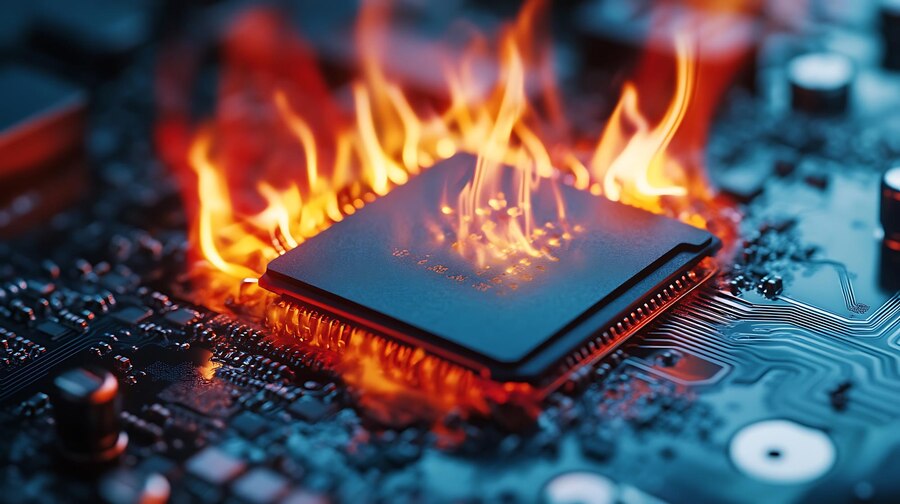
A CPU is too hot if it reaches temperatures above 80°C (176°F). Such high temperatures can cause overheating, leading to potential damage and reduced performance. Regularly monitor and manage your CPU’s temperature to avoid these risks.
How Is Heat Generated By Your PC?
Heat in a PC is generated mainly by the CPU, GPU, and other internal components as they perform tasks. The energy consumed by these components during processing is converted into heat. This is why efficient cooling and proper ventilation are essential to keep your PC running smoothly.
How To Spot An Overheating PC?
To spot an overheating PC, look for sudden performance slowdowns, unusual fan noise, or frequent crashes. Check if your computer feels unusually hot to the touch and monitor CPU temperatures using software for signs of excessive heat.
Read Also: Pre-Memory CPU Initialization Is Started – Detailed Guide!
Is Your PC Overheating Or Just Hot?
Yes, to determine if your PC is overheating or just warm, use temperature monitoring software. Overheating often leads to performance issues or crashes, while a warm PC might just feel hot but still operate normally.
What Temperature Should Your CPU Be?
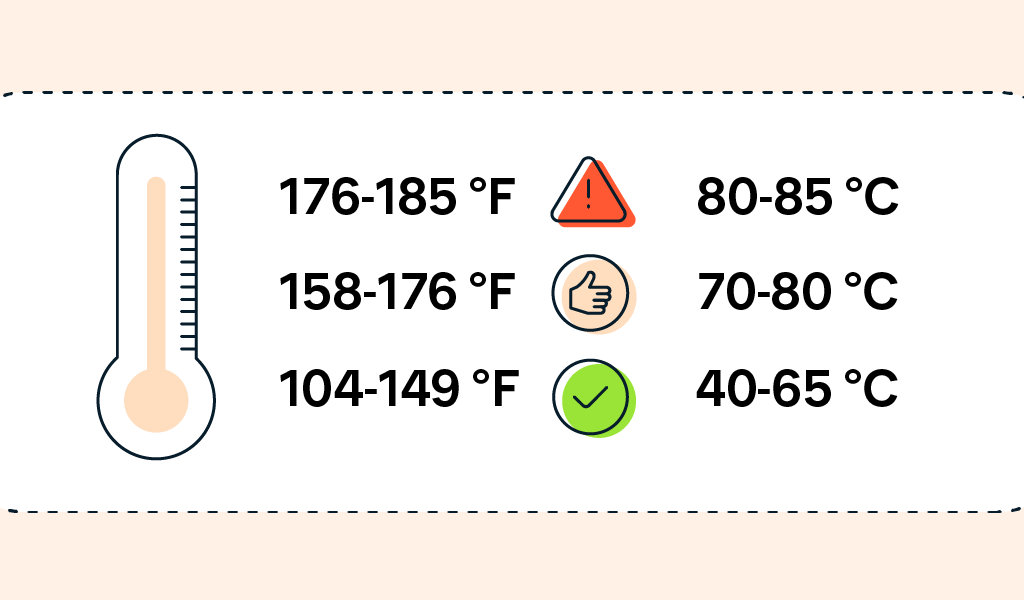
Your CPU should generally be between 30°C to 40°C (86°F to 104°F) when idle and 60°C to 70°C (140°F to 158°F) under heavy load. Keeping it within these ranges helps ensure optimal performance and longevity.
What Should My CPU Temperature Be While Playing Games?
While playing games, a CPU temperature of 60°C to 75°C (140°F to 167°F) is typical. Keeping temperatures within this range helps ensure stable performance and prevents overheating during intense gaming sessions.
How To Maintain A Safe CPU Temperature?
To maintain a safe CPU temperature:
- Boost Cooling: Clean dust from fans, reapply thermal paste and use effective cooling systems.
- Improve Airflow: Add or reposition case fans.
- Cool the Room: Use air conditioning or fans.
- Manage Tasks: Avoid overloading your CPU with too many intensive programs.
What Is A Good Temperature For Your Computer?
To maintain a safe CPU temperature:
- Boost Cooling: Clean dust from fans, reapply thermal paste and use effective cooling systems.
- Improve Airflow: Add or reposition case fans.
- Cool the Room: Use air conditioning or fans.
- Manage Tasks: Avoid overloading your CPU with too many intensive programs.
How To Prevent Computer Overheating And Keep Your PC Cool?

To prevent computer overheating and keep your PC cool:
- Enhance Cooling: Clean dust from vents and fans, reapply thermal paste, and use high-quality cooling systems.
- Optimise Airflow: Ensure good ventilation by adding or rearranging case fans.
- Regulate Room Temperature: Use air conditioning or fans to keep the room cool.
- Manage Workload: Avoid running multiple intensive programs simultaneously and update software regularly.
What Is An Ideal CPU Temperature?
An ideal CPU temperature is between 30°C (86°F) and 40°C (104°F) when not doing much and between 60°C (140°F) and 70°C (158°F) during heavy tasks like gaming. Keeping your CPU within these ranges ensures good performance and longevity.
What Is A Normal Temperature For A CPU, And How Do I Keep It Low?
A normal CPU temperature ranges from 30°C to 40°C (86°F to 104°F) when idle and 60°C to 70°C (140°F to 158°F) under heavy load. To keep it low:
- Boost Cooling: Clean dust, reapply thermal paste and consider better cooling solutions.
- Improve Airflow: Add or rearrange fans in your PC case.
- Cool the Room: Use AC or fans to lower the room temperature.
- Manage Tasks: Avoid running too many demanding programs at once and ensure your software is up-to-date.
Read Also: Is It Normal For CPU Clock Speed To Fluctuate? Detailed Guide!
How To Check Your Computer’s CPU Temperature?
To check your computer’s CPU temperature, install a monitoring tool like Core Temp or HWInfo. These tools display real-time temperature readings and allow you to track any spikes. You can also check temperatures through the BIOS/UEFI settings on your computer.
Why Is My CPU Temp So High?
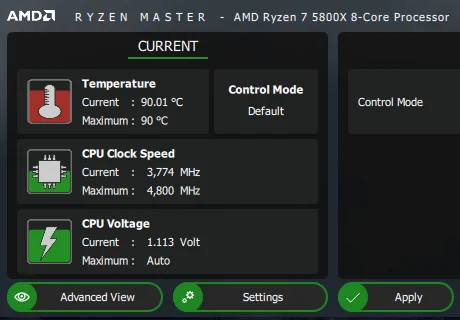
High CPU temperatures can be caused by several factors: running intensive tasks, overclocking, a faulty fan, dust buildup, or limited ventilation. Ensuring proper cooling, cleaning your PC, and managing your workload can help lower temperatures.
What CPU Temperature Is Normal?
A normal CPU temperature typically ranges from 40-65°C (104-149°F) under regular use. During intensive tasks or gaming, temperatures can rise to 70-80°C (158-176°F). Temperatures consistently above 80°C (176°F) may indicate a problem.
How To Check PC Temperature In The Bios/Uefi?
To check your PC temperature in the BIOS/UEFI, restart your computer and press a key like F12, ESC, F2, or DEL during startup. Once in BIOS/UEFI, you’ll find the CPU temperature displayed on the main screen. Note that this only shows the current temperature and does not monitor it over time.
How To Check CPU Temp Without Bios?
To check CPU temperature without using BIOS, install third-party software like Core Temp, HWInfo, or NZXT’s Cam. These tools provide real-time temperature monitoring and are ideal for continuous tracking during regular use.
Read Also: Are Odd Cores On My CPU My Non-Hyperthreaded Cores? The Guide of 2024
How To Monitor Your CPU Temperature Constantly?
To monitor your CPU temperature constantly, use tools like Core Temp, HWInfo, or NZXT’s Cam. Install the software and configure it to display temperature readings on your taskbar or desktop for real-time monitoring.
How To Monitor Your CPU Temperature While Gaming?
To monitor CPU temperature while gaming, use RivaTuner with MSI Afterburner. Install both tools, open MSI Afterburner, go to the Monitoring tab, and enable “Show in On-Screen Display for CPU temperature. Your temperature will then appear in-game, allowing for easy monitoring.
What Is Good CPU Temperature?
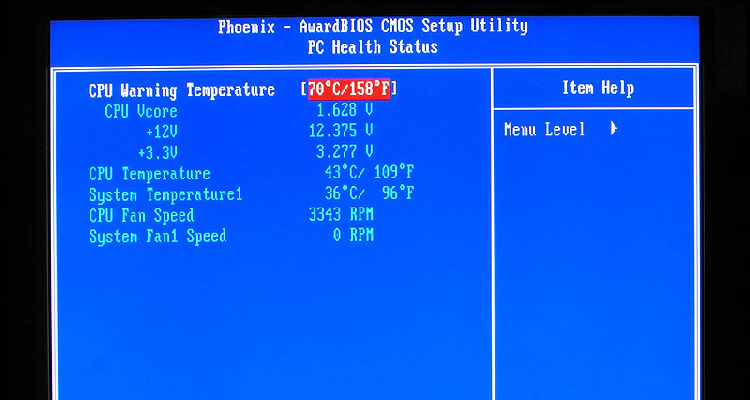
A good CPU temperature typically ranges from 40-65°C (104-149°F) during normal use. Under heavy load or gaming, temperatures up to 70-80°C (158-176°F) are acceptable. Keeping temperatures within these ranges helps ensure optimal performance and longevity.
What Is A Good CPU Temperature For Gaming?
A good CPU temperature for gaming is between 65°C and 85°C (149°F to 185°F). While occasional spikes above 85°C are normal, consistently high temperatures might signal a cooling problem. For prolonged gaming, try to maintain temperatures around 80°C (176°F).
How To Keep Down CPU Temperatures?
To keep CPU temperatures down, consider these tips:
- Improve Cooling: Upgrade your CPU cooler or add more case fans.
- Clean Dust: Regularly clean dust from your PC’s fans and vents.
- Optimise Airflow: Ensure your PC has good ventilation and isn’t in a confined space.
- Manage Workload: Close unnecessary background applications and avoid overclocking.
- Apply Thermal Paste: Reapply or upgrade the thermal paste between the CPU and cooler.
- Monitor Temperatures: Use software to keep track of temperatures and adjust settings as needed.
How Hot Is Too Hot? (Cpu)
For a CPU, temperatures above 80°C (176°F) are considered too hot. Prolonged exposure to temperatures above this range can lead to performance issues, overheating, and potential damage. Ideally, keep your CPU temperatures below 70°C (158°F) during heavy use to ensure long-term stability and health.
What is a Good and Normal CPU Temp?
A normal CPU temperature is between 30°C (86°F) and 40°C (104°F) when idle or lightly used, meaning CPU usage is 1% to 10%. To check, open Task Manager, go to the Performance tab, and ensure the CPU usage is low.
Average CPU Temp
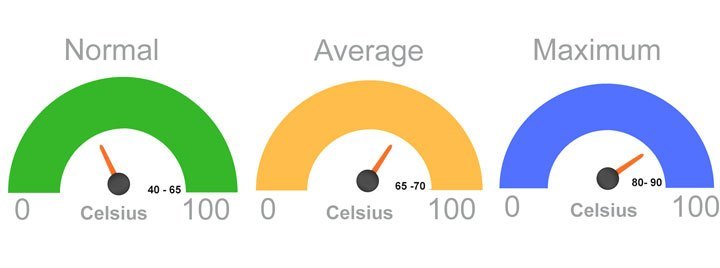
Average CPU temperatures depend on factors like the CPU type, cooling, and room temperature. Usually, when idle, temps are 30°C to 40°C (86°F to 104°F), and under heavy use, they reach 60°C to 70°C (140°F to 158°F). More demanding tasks make the CPU hotter.
Safe CPU Temp
Don’t worry about your CPU overheating too quickly! Most modern processors can handle temperatures up to 80°C (176°F) safely. However, keeping your CPU cooler than this is better for the best performance and longer life.
How Hot is Too Hot for a CPU?
A CPU is considered too hot if it reaches temperatures above 80°C (176°F). While most CPUs can handle up to 80°C safely, consistently high temperatures can lead to performance issues and shorten the processor’s lifespan.
Good CPU Temp While Gaming/Streaming
While gaming or streaming, a good CPU temperature typically ranges from 65°C to 85°C (149°F to 185°F). If your CPU stays within this range, it’s handling the load well. Temperatures above 85°C may indicate overheating and require attention.
In a Nutshell
In a nutshell, during gaming or streaming, aim for CPU temperatures between 65°C and 85°C (149°F to 185°F). Staying within this range ensures good performance and avoids overheating.
How to Check CPU Temperature?
To prevent overheating, regularly monitor your CPU temperature using Windows utilities, third-party software like Core Temp, or an infrared thermometer. These methods help you stay informed and keep your system running smoothly.
Method 1: Check CPU temperature with BIOS
To check your CPU temperature via BIOS, restart your computer and enter BIOS/UEFI by pressing a key (often F2, DEL, or ESC) during startup. Once in BIOS, navigate to the hardware monitor section to view the CPU temperature.
Method 2: Use CPU temperature monitoring software
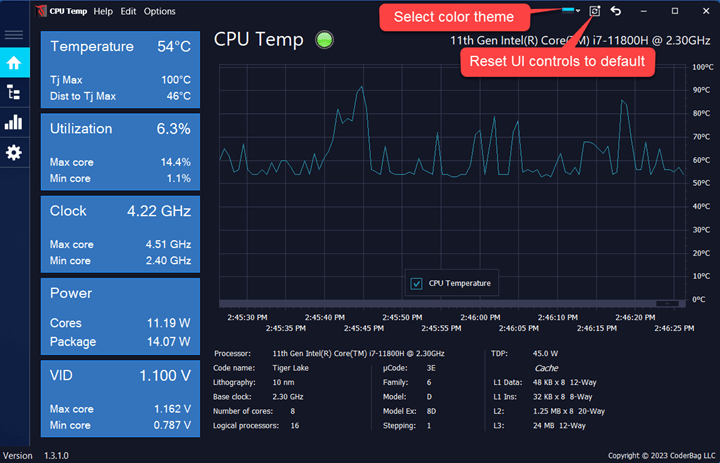
To use CPU temperature monitoring software, download and install a tool like Core Temp or HWInfo. Open the software to view real-time CPU temperatures and track performance over time, helping you keep an eye on any potential overheating issues.
Method 3: Check CPU temperature with an infrared thermometer
To check CPU temperature with an infrared thermometer, power off your computer, open the case, and point the thermometer at the CPU’s heat sink or cooling area. This will give you a direct, accurate reading of the CPU’s temperature.
How to choose an IR thermometer?
When choosing an IR thermometer, decide between a simple IR thermometer for quick readings or a thermal imaging gun for detailed heat maps.
Read Also: Process Lasso Error Setting Process CPU Affinity – Complete Details in 2024
Check CPU temperature with a handheld IR thermometer
To check your CPU temperature, use the NF-HT650C IR thermometer. It provides accurate readings with a single press and measures temperatures from -50°C to 800°C (-58°F to 1472°F), giving you quick insights into your CPU’s status.
Check CPU temperature with an IR imaging gun
To monitor your CPU temperature, use the NF-521S IR imaging gun. It provides live thermal images, highlights hot and cold areas, and supports video recording, allowing you to analyse temperature fluctuations during gaming or streaming for a detailed performance review.
Why Is My CPU Too Hot?
Your CPU may be too hot due to high workload, overclocking, a faulty fan, dust buildup, or poor ventilation. These issues prevent effective cooling and can cause overheating.
How to cool the CPU down?

To cool down an overheated CPU, you can clean dust from fans and vents, improve airflow with better cooling solutions, apply fresh thermal paste, and ensure your PC is in a cool, well-ventilated area.
Method 1: Boost the cooling system
To boost your CPU cooling:
- Clean Dust: Remove dust from fans and heat sinks.
- Reapply Thermal Paste: Use high-quality paste between the CPU and cooler.
- Upgrade Cooling: Consider high-end air or liquid coolers for better performance.
- Improve Airflow: rearrange components and add or reposition fans for better case ventilation.
Method 2: Keep the room cool
A hot room will increase your CPU’s temperature, especially during intensive tasks. To prevent this, use an air conditioner to lower the room temperature and keep your computer cool.
Method 3: Avoid starting unbearable missions
Don’t run multiple demanding programs simultaneously, like gaming while streaming. Close unnecessary tasks and limit the duration of high-intensity activities. Also, keep your software and firmware updated to ensure optimal performance.
Method 4: Upgrade the CPU
If overheating persists despite cooling efforts, consider upgrading to a more efficient CPU. Newer models often have better thermal management, improving overall performance and reducing heat output.
Why is my CPU running hot, and what can I do about it?
Your CPU might be running hot due to dust buildup, inadequate cooling, or heavy workloads. To address this:
- Clean Your PC: Remove dust from fans and heat sinks.
- Improve Cooling: Upgrade to better cooling systems and reapply thermal paste.
- Enhance Airflow: Add or rearrange fans for better ventilation.
- Monitor Usage: Avoid running too many demanding applications at once and keep software updated.
FAQ,s
1. What Is Dangerously Hot For A CPU?
Yes, a CPU temperature above 80°C (176°F) is dangerously hot. It’s best to keep your CPU cooler to avoid damage and ensure proper performance.
2. What Temperature Is Overheating A CPU?
Yes, a CPU temperature above 85°C (185°F) is considered overheating. To prevent damage and ensure smooth performance, keep your CPU temperature below this level.
3. Is 80 Celsius Too Hot For A CPU?
Yes, 80°C (176°F) is considered quite hot for a CPU, especially if sustained for long periods. It’s best to keep temperatures lower to avoid potential damage and ensure better performance.
4. How Hot Can I Let My CPU Get?
You should try to keep your CPU below 80°C (176°F). Temperatures above this can cause damage or reduce performance. For best results, aim to keep it cooler whenever possible.
5. How Hot Is Too Hot For Gpu?
A GPU is usually too hot if it reaches 85°C (185°F) or higher. For most GPUs, staying below this temperature helps maintain performance and avoid damage.
6. Cpu How Hot Is Too Hot in Fahrenheit?
For a CPU, temperatures above 176°F (80°C) are considered too hot. Keeping it below this threshold helps ensure your computer runs smoothly and avoids damage.
7. CPU How Hot Is Too Hot Windows 10?
For Windows 10, a CPU temperature above 176°F (80°C) is too hot. If your CPU consistently reaches or exceeds this temperature, it’s a sign to improve cooling or check for issues.
8. How Hot Is Too Hot For The CPU While Gaming?
While gaming, a CPU temperature above 176°F (80°C) is considered too hot. For optimal performance and safety, aim to keep it below this threshold.
9. CPU How Hot Is Too Hot For Gaming?
For gaming, a CPU temperature above 176°F (80°C) is too hot. Keeping your CPU below this temperature helps ensure better performance and longevity.
10. How Hot Is Too Hot For A CPU Laptop?
For a laptop CPU, temperatures above 185°F (85°C) are too hot. Keeping the CPU below this threshold helps prevent overheating and potential damage.
11. Should I Worry About CPU High Temperatures If The PC Runs Smoothly?
Yes, high CPU temperatures can still be a concern even if your PC runs smoothly. Over time, excessive heat can damage components and shorten their lifespan. It’s best to monitor and manage temperatures to avoid long-term issues.
Conclusion
In conclusion, a CPU temperature above 80°C (176°F) is generally considered too hot, especially during normal use. Regularly monitoring your CPU’s temperature and maintaining effective cooling can help prevent overheating and ensure your system runs smoothly and lasts longer.
Read Also:
- Pre-Memory CPU Initialization Is Started – Detailed Guide!
- Is It Normal For CPU Clock Speed To Fluctuate? Detailed Guide!
- Are Odd Cores On My CPU My Non-Hyperthreaded Cores? The Guide of 2024
- Process Lasso Error Setting Process CPU Affinity – Complete Details in 2024
References:
- https://www.quora.com/Why-is-my-laptop-fan-suddenly-making-really-weird-loud-noises-and-overheating-It-sounds-like-something-is-stuck-in-the-fan-but-nothing-could-have-got-in-it-It-happened-randomly-during-a-normal-daily-use
- https://www.tomshardware.com/how-to/how-to-check-cpu-temp-temperature
- https://rog-forum.asus.com/t5/rog-gaming-notebooks/so-uh-how-can-i-clean-the-fans-on-this-thing/td-p/102364



